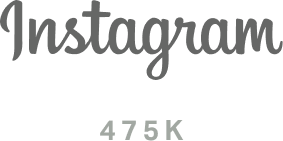











While cosmetic procedures are not covered by insurance, and all surgical fees are to be paid in full prior to surgery with Dr. Nayak, we do offer outside financing options. To accommodate our patients, we have partnered with both PatientFi and CareCredit. For more information regarding these flexible financing options as well as a financing calculator, you may visit our Financing page.
As long as you are in over-all good health, your procedure would be performed here, in our accredited, in-office surgical suite with IV sedation (much like what’s used for a colonoscopy or wisdom teeth removal). For those patients who require more observation due to health reasons, the procedure would be performed in a hospital under general anesthesia.
Patients must avoid all blood thinning drugs and supplements for 2 weeks prior to surgery as well as 2 weeks after. Medicines such as Aspirin, Ibuprofen (Advil/Motrin) , Naprosyn (Aleve), Arthritis, pain medications, Vitamin E, Garlic, Ginger, Ginseng, St.John’s Wort, Ginkgo, Flax seed, Fish oil or any products containing these medications should be avoided for 2 weeks before and after surgery. You may take Tylenol or extra strength Tylenol.
Patients must be off all nicotine and smoking of any kind, for 2 months before and after surgery. This includes cigarettes, e-cig, nicotine/patch gum and marijuana.
Payment for nonsurgical services are due at the time services are rendered. Payments not made at the time services are rendered will result in an additional $100 late payment fee. Once unpaid for 2 weeks, the total amount due including the late payment fee will be turned over to collections where additional interest and fees may be accrued.
Surgical payment policies are outlined on the surgical quote sheet presented at consultation. Final payment (or final financing) must be completed no less than 2 weeks before surgery.
Rhinoplasty is cosmetic nasal surgery to improve the shape of the nose. It is often combined with functional nasal surgery to improve nasal breathing.
Nasal packing (and its subsequent removal) is unpleasant. Luckily, unlike most surgeons, I almost never find it necessary to pack noses after surgery.
Most patients report more stuffiness and pressure than true pain. Patients find their pain is easily controlled by pain pills the first night, and most no longer take pain pills after 1-2 days.
Deep sedation is my choice for nasal surgery. Deep sedation allows for the patient to be comfortable and fully monitored for the utmost safety.
The art of rhinoplasty (cosmetic nasal surgery) is to bring out the patient’s best features and give the patient a natural, non-operated look. Often that means making the nose “go away” so it blends in with the rest of the face and lets your eyes and smile take center stage. A successful rhinoplasty creates a balanced face, not an artificially beautiful nose.
Eyelid surgery’s primary goal is to remove extra folds of skin and pockets of fat that contribute to a tired, sad, or angry look. In general, these changes create a more youthful and refreshed appearance, not a differently shaped eye. Occasionally, if desired, a more defined upper eyelid crease may be sculpted or more upper lid skin may be exposed for a more dramatic look. Similarly, a subtle lift may be added to the outside corner of the eye if desired.
The right time for cosmetic surgery depends more on your appearance than your age. For some people, extra upper eyelid skin or lower eyelid puffiness can begin as early as in their twenties. Most people notice some extra upper eyelid skin by their thirties or forties, and early bags under their eyes around the same time. For older individuals, eyelid surgery may contribute to a subtle facial rejuvenation with wrinkle fillers or fat transfer, or may be part of an overall facial rejuvenation when combined with a facelift or browlift.
Most people feel very comfortable after eyelid surgery. Most need either no pain medication or just regular Tylenol for discomfort. While they feel great, people usually don’t want to return to work until their sutures are removed 4-5 days after surgery.
Makeup can be worn on upper lids usually as soon as the sutures are out and the incisions are healed. You may wear makeup on the lower lid area the day after the surgery.
Most bruising fades by one week. Any residual bruising at that point is usually readily covered by concealers.
All fat used for facial fat transfer is taken from you. Generally, the best sources are the inner thigh, outer thigh, love handles, or belly.
Generally, small amounts of transferred fat are all that are required in the face. Therefore, taking this small amount of fat from a large area such as the thigh, hip, or belly is not noticeable.
Transferred fat is a kind of graft. Once transferred, about half of the fat lives in its new location, and half dissolves. The fat that remains at six months generally persists for many years, and grows and shrinks naturally as your weight fluctuates. Occasionally, if less fat remains at 6 months that we would like, we would need to perform an enhancement and add a touch of extra fat at that point.
Fat transfer is generally not painful in the face, just “tight” or “swollen” feeling. Sometimes the belly or thigh donor site may be sore for a day or so, like the pain from a hard workout.
Recent advances in fat transfer technique have resulted in much greater predictability and fat survival through placing tiny droplets of fat into individual tunnels. Because of the many little pockets placed, fat transfer creates significant bruising and swelling. While most of the bruising is gone by 2 weeks, you may have some swelling remaining for over a month, especially near the lower eyelid or upper cheek.
Yes – in fact fat transfer is often the perfect complement to facelifts or lower eyelid surgery.
Aging in the face results from more than just sagging or wrinkled skin. That’s why cutting away skin alone does not create a natural or enduring rejuvenation. Think of turning a raisin back into a grape – you wouldn’t do it by cutting away skin! Similarly, rejuvenation of the face requires treating the skin, muscles, fat, and sometimes the underlying framework independently.
A traditional facelift involves rejuvenation of the “jowls”, jaw line and neck by trimming away excess skin and tightening the underlying muscles. It is often combined with other procedures to reinflate the cheeks, strengthen the chin, or freshen the brow or eye areas. Today, however, targeted facelifts can create rejuvenation of isolated areas, such as the cheek or neckline, when those areas have aged disproportionately to the rest of the face. Choosing among these various options depends on your goals, your aesthetic, and the amount of recovery time that fits your lifestyle.
Unlike chest or belly surgery where you can’t help but move the incision every time you breathe or sit up, facial surgery is not really painful. While you may have swelling and bruising that you find uncomfortable or “tight,” actual pain is uncommon.
Bruising is most severe the first one to two weeks, depending on the procedure. Fat transfer, in particular, may produce longer-lasting bruising or swelling. For most procedures, I encourage patients to use a homeopathic regimen that I have found very effective in shortening recovery time.